Navigating the intricate in-vivo journey of lipid nanoparticles tailored for the targeted delivery of RNA therapeutics: a quality-by-design approach
- PMID: 39543630
- PMCID: PMC11566655
- DOI: 10.1186/s12951-024-02972-w
Navigating the intricate in-vivo journey of lipid nanoparticles tailored for the targeted delivery of RNA therapeutics: a quality-by-design approach
Abstract
RNA therapeutics, such as mRNA, siRNA, and CRISPR-Cas9, present exciting avenues for treating diverse diseases. However, their potential is commonly hindered by vulnerability to degradation and poor cellular uptake, requiring effective delivery systems. Lipid nanoparticles (LNPs) have emerged as a leading choice for in vivo RNA delivery, offering protection against degradation, enhanced cellular uptake, and facilitation of endosomal escape. However, LNPs encounter numerous challenges for targeted RNA delivery in vivo, demanding advanced particle engineering, surface functionalization with targeting ligands, and a profound comprehension of the biological milieu in which they function. This review explores the structural and physicochemical characteristics of LNPs, in-vivo fate, and customization for RNA therapeutics. We highlight the quality-by-design (QbD) approach for targeted delivery beyond the liver, focusing on biodistribution, immunogenicity, and toxicity. In addition, we explored the current challenges and strategies associated with LNPs for in-vivo RNA delivery, such as ensuring repeated-dose efficacy, safety, and tissue-specific gene delivery. Furthermore, we provide insights into the current clinical applications in various classes of diseases and finally prospects of LNPs in RNA therapeutics.
© 2024. The Author(s).
Conflict of interest statement
Figures
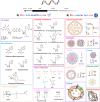


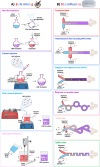



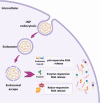
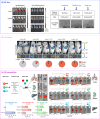
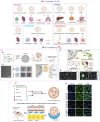


Similar articles
-
Zwitterionic Polymer Lipid Nanoparticles Enabling Selective Organ Targeting Delivery of Small Interfering RNA for the Treatment of Hepatic and Pulmonary Inflammation.Small. 2025 Jan;21(3):e2407040. doi: 10.1002/smll.202407040. Epub 2024 Dec 4. Small. 2025. PMID: 39629543
-
Targeted delivery systems of siRNA based on ionizable lipid nanoparticles and cationic polymer vectors.Biotechnol Adv. 2025 Jul-Aug;81:108546. doi: 10.1016/j.biotechadv.2025.108546. Epub 2025 Feb 25. Biotechnol Adv. 2025. PMID: 40015385 Review.
-
Enhancing RNA-lipid nanoparticle delivery: Organ- and cell-specificity and barcoding strategies.J Control Release. 2024 Nov;375:366-388. doi: 10.1016/j.jconrel.2024.08.030. Epub 2024 Sep 18. J Control Release. 2024. PMID: 39179112 Free PMC article. Review.
-
Quantitation of physiological and biochemical barriers to siRNA liver delivery via lipid nanoparticle platform.Mol Pharm. 2014 May 5;11(5):1424-34. doi: 10.1021/mp400584h. Epub 2014 Apr 1. Mol Pharm. 2014. PMID: 24588618
-
Lipid nanoparticles for hepatic delivery of small interfering RNA.Biomaterials. 2012 Sep;33(25):5924-34. doi: 10.1016/j.biomaterials.2012.05.002. Epub 2012 May 29. Biomaterials. 2012. PMID: 22652024 Free PMC article.
Cited by
-
PROTACs coupled with oligonucleotides to tackle the undruggable.Bioanalysis. 2025 Feb;17(4):261-276. doi: 10.1080/17576180.2025.2459528. Epub 2025 Feb 3. Bioanalysis. 2025. PMID: 39895280 Review.
-
From Synaptic Plasticity to Neurodegeneration: BDNF as a Transformative Target in Medicine.Int J Mol Sci. 2025 Apr 30;26(9):4271. doi: 10.3390/ijms26094271. Int J Mol Sci. 2025. PMID: 40362507 Free PMC article. Review.
-
The Protein Corona Paradox: Challenges in Achieving True Biomimetics in Nanomedicines.Biomimetics (Basel). 2025 Apr 29;10(5):276. doi: 10.3390/biomimetics10050276. Biomimetics (Basel). 2025. PMID: 40422106 Free PMC article. Review.
-
Preparation of atorvastatin calcium-loaded liposomes using thin-film hydration and coaxial micromixing methods: A comparative study.Int J Pharm X. 2024 Nov 29;8:100309. doi: 10.1016/j.ijpx.2024.100309. eCollection 2024 Dec. Int J Pharm X. 2024. PMID: 39697814 Free PMC article.
References
-
- Burrows C, Helm M, Zhou X. Modulating RNA with chemical modifications. Acc Chem Res. 2024;57:175–6. 10.1021/acs.accounts.3c00770. - PubMed
Publication types
MeSH terms
Substances
LinkOut - more resources
Full Text Sources

